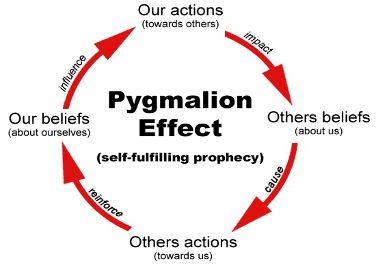– Bernie Kelly –
Create the future, don’t rehash the past
– Now is the time to provide space for ‘feed-forward’ with your teams
There is a lot going on adapting to immediate constraints, gaps, and changes. Online meetings, check-ins, chase-ups, emails, watching the news and following social media updates, immediate corrective actions, response plans, revising plans. It is a cycle we can get caught in, week on week. There is no debate that it is an exhausting time in leadership roles.
Many of the leaders I am talking with are increasingly lifting their head and looking to the next horizon. The stress of the incoming strategic imperatives is not looking any lighter.
There is still a lot of pull into the reactive work we need to do now. How do we make the most of the precious proactive time and energy we have?
Now is the time to provide space for ‘feed-forward’ with your teams.
Ensure more energy is on a future we can change, rather than a past we can not.
A lot of our established management processes are built around feedback. Feedback plays an important role, however, if we are not conscious about this we will default go with the established patterns and burn disproportionate precious energy on going over a past we can not change.
As examples, major processes clearly built around feed-back include:
- Individual Performance Reviews
- Team/Division/ Company Monthly Reports
- Monthly Activity Reports
- Quarterly Board Reports
All of these are quite time intensive and are typically opportunities to redeploy some time to Feed-forward – working on a future we can change.
Feed-forward planning for Leadership Teams has us looking forward at who we need to be, and what we need to do to be at the target condition. Most of us know this type of process in organisational strategic planning cycles but are not necessarily using it cascaded into the organisation or through more dynamic phases within strategic horizons.

- The Current Condition – where are we at? What is not serving us?
- The Target Condition – who and where do we want to be?
- Attributes and activity to play at that target level?
- Feed-forward actions & creation of habits
The feed-forward actions are not personalised. They are just what is required to be the player we want to be.
This process avoids the energy that is typically there, even when feed-back is done well, of things you could have done better. The social energy of having to lean into feedback is very different from the inspiration of feed-forward.
I was first introduced to the term of Feed-forward by Marshall Goldsmith as used in his paper “Want to Give Feedback? Rather Try Feedforward! (1) Where he explains the benefits as focusing on solutions, rather than mistakes, on the future, rather than the past, will enhance the self-image of business leaders and employees alike and propel them on the road to success.
He has a short and fun exercise which I have used with many teams and is a great warm up exercise for teams looking to create a better future.
Feed-forward Warm up exercise:
The exercise typically lasts 10-15 minutes, and the participants have 6- 7 dialogue sessions.
In the exercise participants are asked to:
- Pick one behaviour they would like to change. Change in this behaviour should make a significant, positive difference in their lives.
- Describe this behaviour to randomly selected fellow participants. This is done in one-on-one dialogues. It can be done quite simply, such as, “I want to be a better listener.”
- Ask for feed-forward – for two suggestions for the future that might help them achieve a positive change in their selected behaviour. If participants have worked together in the past, they are not allowed to give ANY feedback about the past. They are only allowed to give ideas for the future.
- Listen attentively to the suggestions and take notes. Participants are not allowed to comment on the suggestions in any way. They are not allowed to critique the suggestions or even to make positive judgmental statements, such as, “That’s a good idea.”
- Thank the other participants for their suggestions.
- Ask the other persons what they would like to change.
- Provide feedforward – two suggestions aimed at helping them change.
- Say ” You are welcome,” when thanked for the suggestions. The entire process of both giving and receiving feedforward usually takes about two minutes.
- Find another participant and keep repeating the process until the exercise is stopped.
Teams always find this exercise fun and energising.
Moving from warm up exercises to sustained change requires owning new habits.
There is an important nuance here that is worth discussing and making really clear that our work at this time is effective in creating the future we target.
James Clear is one of the world’s leading experts on habit formation, and author of Atomic Habits: tiny changes, remarkable results, 2018 (3)
From his research on forming habits he is clear that the most effective way to change your habits is to focus not on what you want to achieve, but on who you wish to become.
“The most effective way to change your habits is to focus not on what you want to achieve, but on who you wish to become.”
– James Clear
James explains that there are three layers of behaviour change: a change in your outcomes, a change in your processes, or a change in your identity.

The foundation of every lasting change is identity. You can change your outcomes or your processes; but, if you don’t change your identity, you will eventually come back to your old habits. For example, if you want to stop smoking, and you keep saying, “I’m trying to quit smoking,” it’s the outcome you are trying to change. Lasting change can only come through identity change. In this example, you must start saying, “I’m not a smoker.” To truly change behaviour you’ll have to redefine and change your identity.
SO HOW DO YOU CHANGE YOUR IDENTITY?
According to James Cleary’s research you need to decide the type of person you want to be:
What are your principles and values?
Who do you wish to become?
What matters the most to you?
How do you want to spend your time?
Then ask yourself: “Who is the type of person that could get the outcome I want?”
For example, the type of person who could lead a transformation strategy is probably a role model in learning and adapting, proactive, inclusive and engaging, and reliable over time. Now your focus shifts from implementing a transformation strategy (outcome-based) to being the type of person who is a role model in learning and adapting, proactive, inclusive and engaging and reliable over time (identity-based).
WHAT ABOUT LEADING A TEAM CHANGE IN IDENTITY?
I was discussing this with one leadership team when one of the team who is never shy to express their view, which is what I love about them, said “this talk of changing your identity sounds a bit ‘out there’ to me. People in our organisation, and even clients, are in firmly established buckets in my view – “brilliant”, “ok”, “not sure about them”, and “#&*^ wits”.
Fascinating!
He reminded me of a classic story related to leader’s impact on the effectiveness of Feed-forward. This story has had a lasting impact on me as a parent, Leader and Mentor of others.
Have you heard of the Pygmalion or Rosenthal Effect?
It is that teacher expectations can affect the performance of the children they teach.
The first psychologist to systematically study this was a Harvard professor named Robert Rosenthal, who in 1964 did a fascinating experiment at an elementary school south of San Francisco.(4)
They tested students and told the teachers they then organised them into advanced and late developers. The students in the “advanced class”, despite actually being a random selection showed the greatest development in the period to the next testing.

It is now embedded in teacher good practice that they have high expectations of every student. Beyond how this story impacted my desire to make sure their teachers have high expectations of them, it has also become a useful reflection to share when leaders are the limiting factor of teams Feed-forward potential.
Now is the time to provide space for ‘feed-forward’ with your teams.
Define the target future
Create new habits
Expect the best of your team and partners
Create the future, don’t rehash the past.
What has been your experience with Feed-forward?

